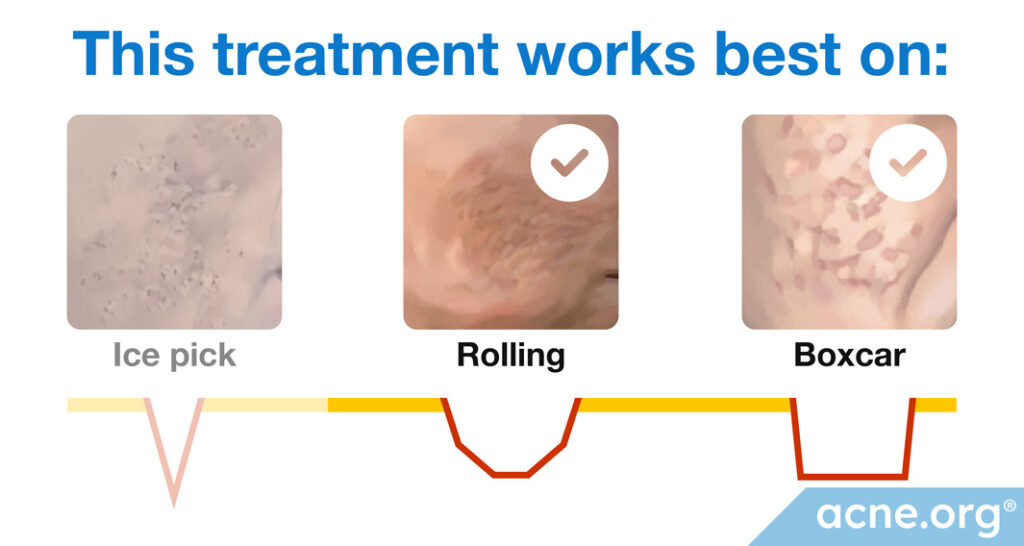
* Skin microneedling with platelet-rich plasma works best on boxcar and rolling scars.
Microneedling with platelet-rich plasma is an uncomfortable and sometimes painful procedure in which many small, fine needles are inserted into the skin, creating numerous tiny injuries in the upper layers of the skin. The goal is to stimulate the formation of collagen and elastin, which will build the skin underneath the scars and raise them, evening out the skin surface.1 Microneedling is often combined with other therapies, in this case with platelet-rich plasma (PRP), for better results. Platelet-rich plasma contains growth factors that further stimulate the formation of tissue beneath the skin’s surface.2
Microneedling is akin to a physical version of fractional laser treatment, although it is not as effective as fractional laser treatment in improving acne scars.
Microneedling with PRP also goes by many other names, including:
- PRP skin needling
- Needle dermabrasion with PRP
- Percutaneous collagen induction therapy (PCI) with PRP
- Dermaroller with PRP
- PRP facial rejuvenation
- PRP skin rejuvenation with microneedling
Compared to other scar revision procedures, microneedling with PRP has several advantages:
- Short recovery period of 2-3 days
- Low risk of side effects
- Long-lasting results3
On the other hand, microneedling with PRP has disadvantages too:
- Can be painful
Microneedling can sometimes be combined with other scar revision procedures, either with or without PRP. Talk to your dermatologist or plastic surgeon to understand what options are available and what procedure(s) will be the most suitable for you.
People with active acne should not undergo acne scar repair of any kind, including microneedling with PRP. Make sure your skin is clear of acne before beginning scar treatment.
Before agreeing to undergo microneedling with PRP, ask multiple medical professionals about their opinions, proposed treatments, expected outcomes, and prices.
Procedure details:

The first part of the procedure is obtaining platelet-rich plasma from the patient. To do that, a medical professional will collect a small amount (usually 15 – 20 ml) of blood from your arm. Blood is then placed in a machine called a centrifuge, which separates plasma from the rest of the blood. Plasma that contains high levels of platelets and growth factors will be extracted and used for acne scar treatment.4
A medical professional will apply plasma to the treated area after the microneedling process and massage it into the skin. A brush, dropper, or even another microneedling device that makes additional micro-holes and improves skin penetration of the PRP, may be used.5
Microneedling procedure:
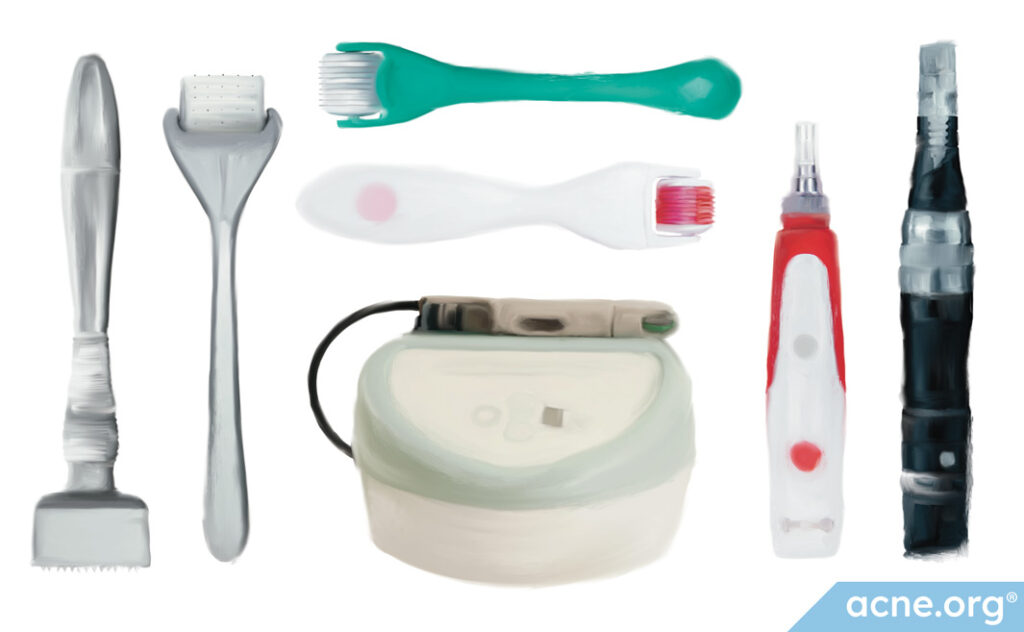
Various rollers used for skin needling
In microneedling, a medical professional uses fine needles 1.0-2.5 mm in length to pierce the epidermis (the outer layer of the skin) as well as the upper one-third to one-half of the dermis (the second, deeper layer of the skin).6
Needling tools available to consumers tend to have shorter needles (0.2-1 mm in length) compared to the needles used by medical professionals. These shorter needles penetrate less deeply into the skin and are less effective for acne scars. Even if you are able to find needles over 1 mm long on the market, it is vitally important that you not use such long needles without a medical professional’s supervision. You could worsen your scarring and cause permanent side effects to your skin.

Microneedling with PRP can be performed by a physician or dermatologist with one of the following needling devices:5
- A cylindrical roller: This tool looks like a miniature paint roller covered with fine needles. The physician rolls the device over the skin with a firm touch.
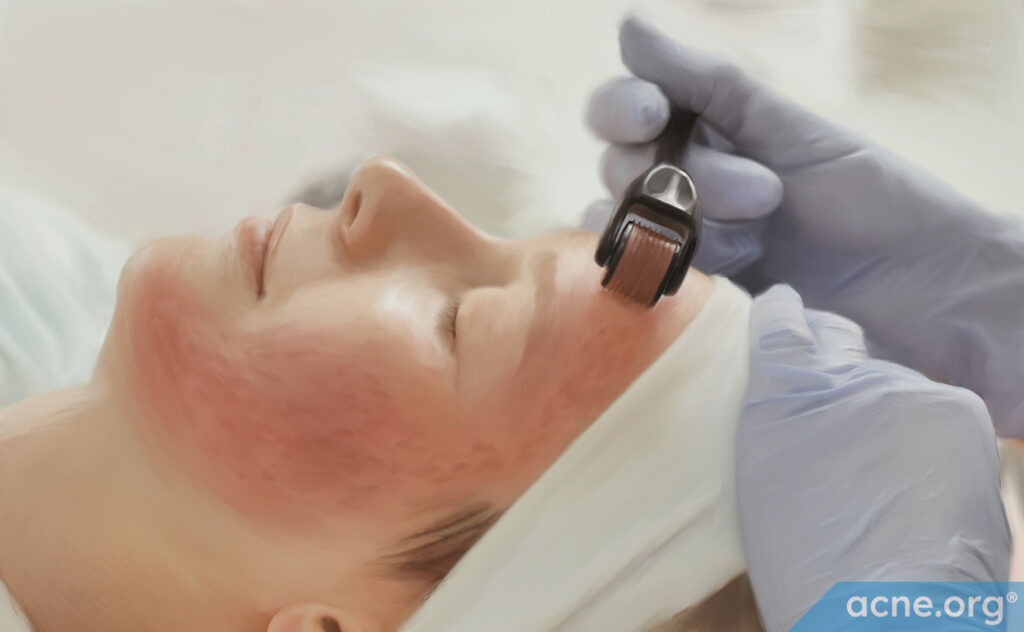
A physician moves a needling roller over a patient’s skin.
- A needling pen: Most needling pens today have an electric motor that stamps the needles down and raises them at a set speed so all the medical professional has to do is glide the pen across the skin, but some needling pens are fully manual. With a manual needling pen, the medical professional presses the pen down over a patch of skin, then moves the pen over to a different patch of skin and repeats.
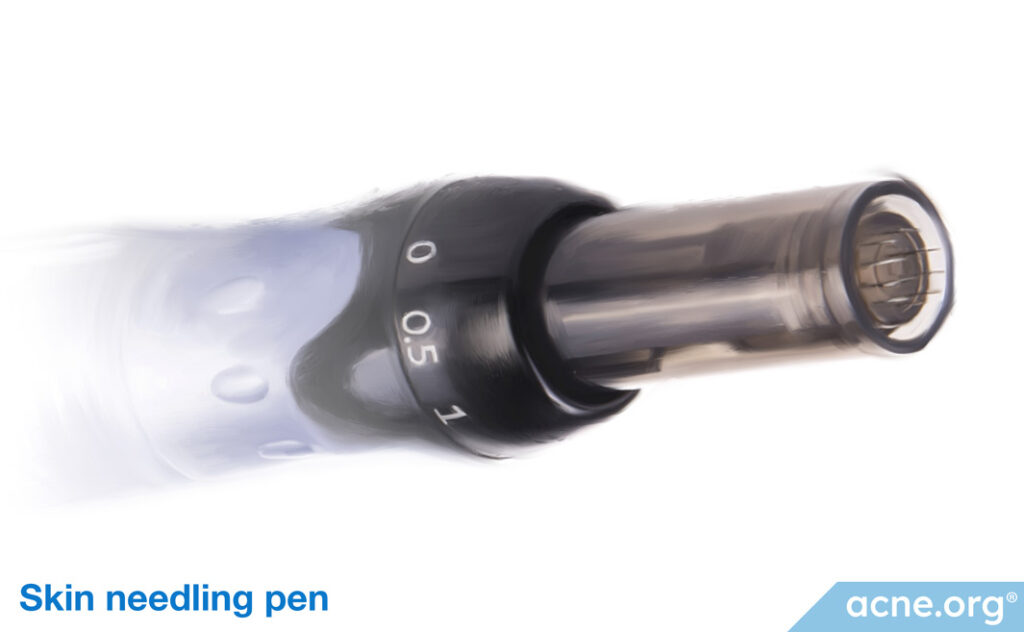
Pen used for skin needling
Although both rollers and pens make small holes in the skin, the holes that rollers make are wider because of the way rollers move across the skin. Thus, some medical professionals prefer to use derma rollers in conjunction with PRP as they create wider skin holes, which allows for increased absorption of plasma.

Anesthesia:
At a medical office: Microneedling can be uncomfortable and even painful, so if you undergo microneedling at a medical office, a medical professional will probably apply a topical anesthetics an hour before the treatment, such as a cream containing the numbing drug, for example, lidocaine, to your skin before beginning the treatment.5,7,8
Before-and-after:
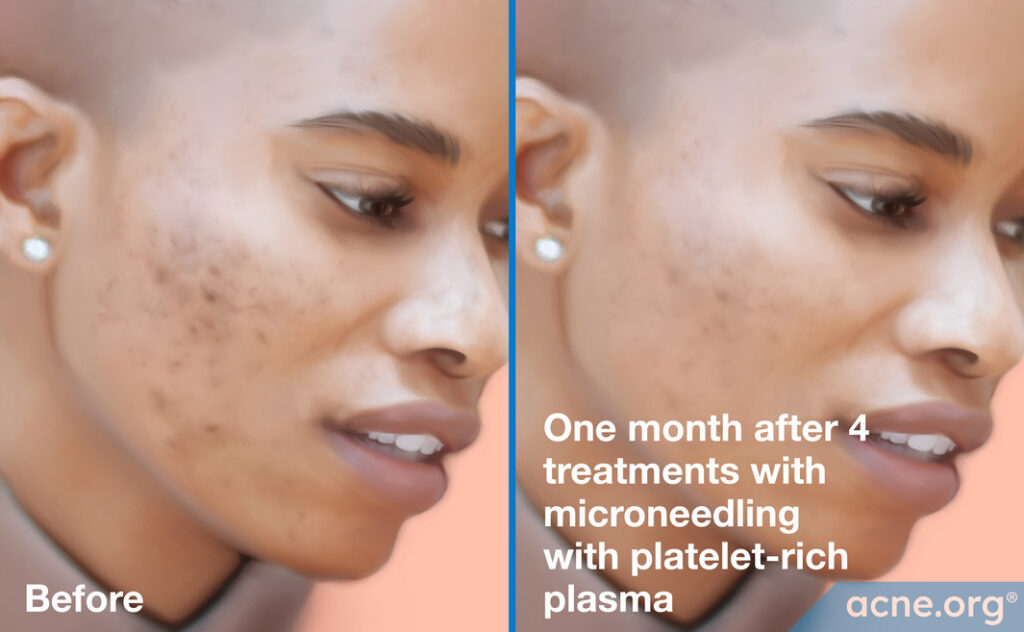
Acne scars before and one month after 4 treatments with skin microneedling with PRP
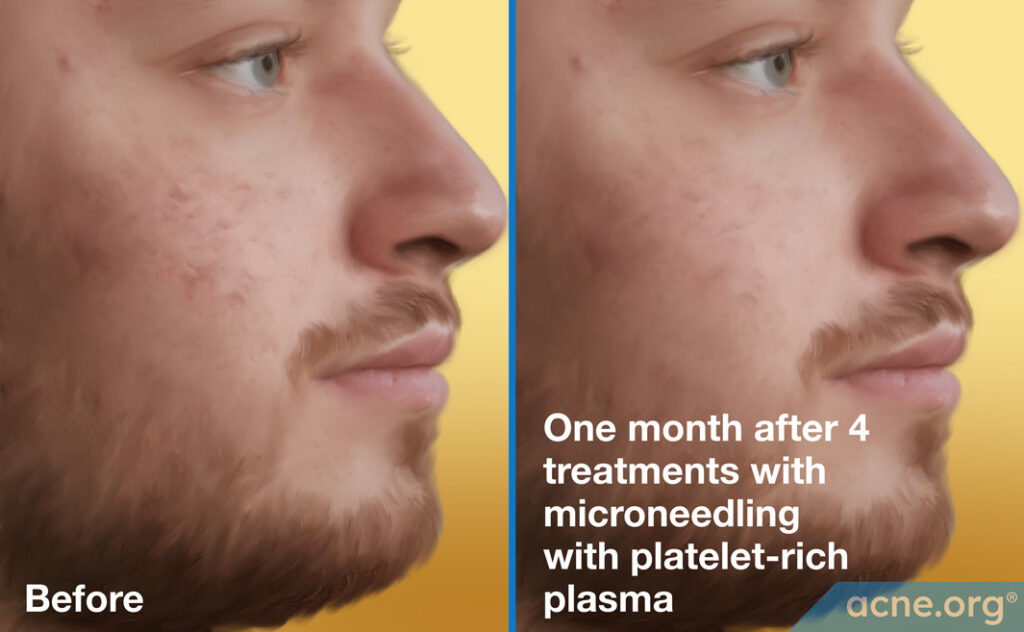
Acne scars before and one month after 4 treatments with skin microneedling with PRP
References
- Juhasz MLW, Cohen JL. Microneedling for the Treatment of Scars: An Update for Clinicians. Clin Cosmet Investig Dermatol. 13, 997-1003 (2020).
- Kang C, Lu D. Combined Effect of Microneedling and Platelet-Rich Plasma for the Treatment of Acne Scars: A Meta-Analysis. Front Med (Lausanne). 8, 788754 (2022).
- Albalat W, Ghonemy S, Saleh A, Elradi M. Microneedling combined with botulinum toxin-A versus microneedling combined with platelet-rich plasma in treatment of atrophic acne scars: a comparative split face study. Arch Dermatol Res. 315(4), 839-46 (2023).
- Cleveland Clinic. Platelet rich plasma. Available from: https://my.clevelandclinic.org/health/treatments/21102-platelet-rich-plasma#procedure-details
- Asif M, Kanodia S, Singh K. Combined autologous platelet-rich plasma with microneedling verses microneedling with distilled water in the treatment of atrophic acne scars: a concurrent split-face study. J Cosmet Dermatol. 15(4), 434-43 (2016).
- Uptodate.com. Management of acne scars. Available from: https://www.uptodate.com/contents/management-of-acne-scars?source=search_result&search=subcision&selectedTitle=1~4.
- Chawla S. Split Face Comparative Study of Microneedling with PRP Versus Microneedling with Vitamin C in Treating Atrophic Post Acne Scars. J Cutan Aesthet Surg. 8(1), 75 (2015).
- Gupta M, Barman KD, Sarkar R. A Comparative Study of Microneedling Alone Versus Along with Platelet-Rich Plasma in Acne Scars. J Cutan Aesthet Surg. 14(1), 64-71 (2021).
 Acne.org Products
Acne.org Products